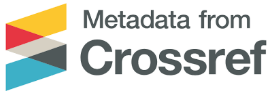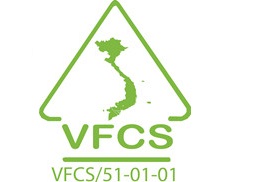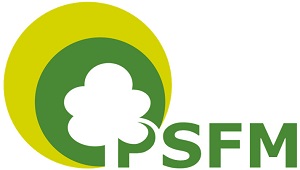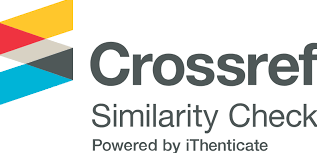BỆNH THỐI QUẢ TÁO MÈO TẠI VIỆT NAM
Từ khóa:
Bệnh thối quả,, Colletotrichum siamense, Táo mèo,, tính gây bệnhTóm tắt
Táo mèo là một loài cây đặc sản và đã được gây trồng phổbiến ở vùng Tây
Bắc Việt Nam. Tổng diện tích trồng Táo mèo đạt khoảng 3.200 ha, sản
lượng quả đạt khoảng 6.500 tấn mỗi năm. Tuy nhiên, hiện tượng thối quả
khá phổbiến, gây thiệt hại đáng kể cho người dân. Nghiên cứu này nhằm
mô tảtriệu chứng, thửtính gây bệnh và xác định loài nấm gây thối quả Táo
mèo. Kết quảphân lập đã thu được 21 chủng nấm từcác mẫu quảthối, tính
gây bệnh của các chủng được chia thành năm nhóm gồm: gây bệnh rất
mạnh (5 chủng), gây bệnh mạnh (4 chủng), gây bệnh trung bình (5
chủng), gây bệnh yếu (4 chủng) và không gây bệnh (3 chủng). Trong
đó chủng TM2 gây bệnh mạnh nhất và gây ra vết bệnh tương tự như
những quảbịthối tựnhiên. Kết quảgiải trình tự đoạn gen ITS1 và
ITS2 bằng cặp mồi ITS1F và ITS4 đã xác định nấm gây bệnh thối quả
Táo mèolà loài Colletotrichum siamense. Nghiên cứu này lần đầu ghi
nhận nấm C. siamensegây thối quảTáo mèo ởViệt Nam và gây bệnh phổ
biến trên nhiều loài cây trồng và rất cần được nghiên cứu phòng trừ đểhạn
chếthiệt hại cho người dân.
Tài liệu tham khảo
1. Adkins C., Armel G., Chappell M., Chong J.C., Frank S.,... and Windham A., 2009. Pest Management Strategic Plan for Container and Fild - Produced Nursery Crops. North Carolina Research and Education Center, Mills River, Nc.
2. James, R. S., Ray, J., Tan, Y. P., & Shivas, R. G., 2014. Colletotrichum siamense, C. theobromicola and C. queenslandicum from several plant species and the identification of C. asianumin the Northern Territory, Australia. Australasian plant disease notes, 9(1), 138.
3. ĐỗThịHà, Nguyễn ThịNgọc Loan, Trần ThịLệHằng, Nguyễn ThịBích Thu và Nguyễn Minh Khởi, 2013. Thành phần hóa học phân đoạn n - hexan quảTáo mèo. Tạp chí Dược liệu, 2:102 - 108.
4. Dwarka, D. J., Sharma, G., & Rajasab, A. H., 2016. Colletotrichum siamensecauses anthracnose on the fruits of Pongamia pinnata in India. Mycosphere, 7(4), 492 - 498.
5. Hoàng ThịLệHằng, 2016. Nghiên cứu ảnh hưởng của biện pháp xử lý và bao bì đến thời gian bảo quản quảTáo mèo. Tạp chí Nông nghiệp và Phát triển nông thôn, 9: 46 - 51.
6. Delgado - Cerrone L., Mondino - Hintz P. & Alaniz - Ferro S., 2016. Botryosphariaceae species associated with stem canker, die - back and fruit rot on apple in Uruguay. Eur J Plant Pathol 146:637-655 DOI 10.1007/s10658 - 016 - 0949 - z Letters, 13: 331 - 332.
7. Lua, H. T., Degrande, A., Catacutan, D., Hoa, N. T., & Cuong, V. K., 2013. Son tra (Docynia indica) value chain and market analysis. AFLI Technical Report No. 9.
8. Munir, M., Amsden, B., Dixon, E., Vaillancourt, L., & Gauthier, N. W., 2016. Characterization ofColletotrichum species causing bitter rot of apple in Kentucky orchards. Plant disease, 100(11), 2194 - 2203.
9. Park, M. S., Kim, B. R., Park, I. H., & Hahm, S. S., 2018. First report of two Colletotrichum species associated with bitter rot on apple fruit in Korea - C. fructicolaand C. siamense. Mycobiology, 46(2), 154 - 158.
10. Paul C. Pecknold, 2016. Apple scab of flowering crabapples. Historical Documents of the Purdue Cooperative Extension Service. Paper 1102.
11. Tiep, H. V., Thuong, P. H., Nguyen, L., Lua, H. T., Thuan, V. V., Kieu, L. T.,... & Harwood, C., 2018. Domestication of Docynia indica in Vietnam. Forests, Trees and Livelihoods, 27(4), 230 - 242.
12. Yash Paul Singh and Geeta Sumbali, 2012. Penicillium toxins associated with post - harvest fruit rot of crab apples (Docynia indicaDcne). Journal of Biosphere, 1: 4 - 6.












